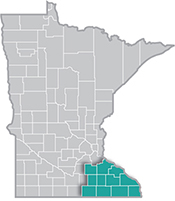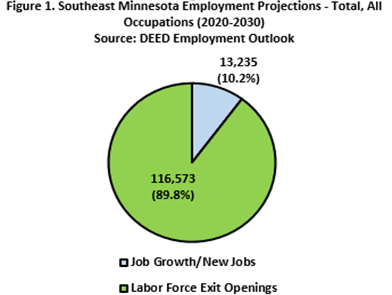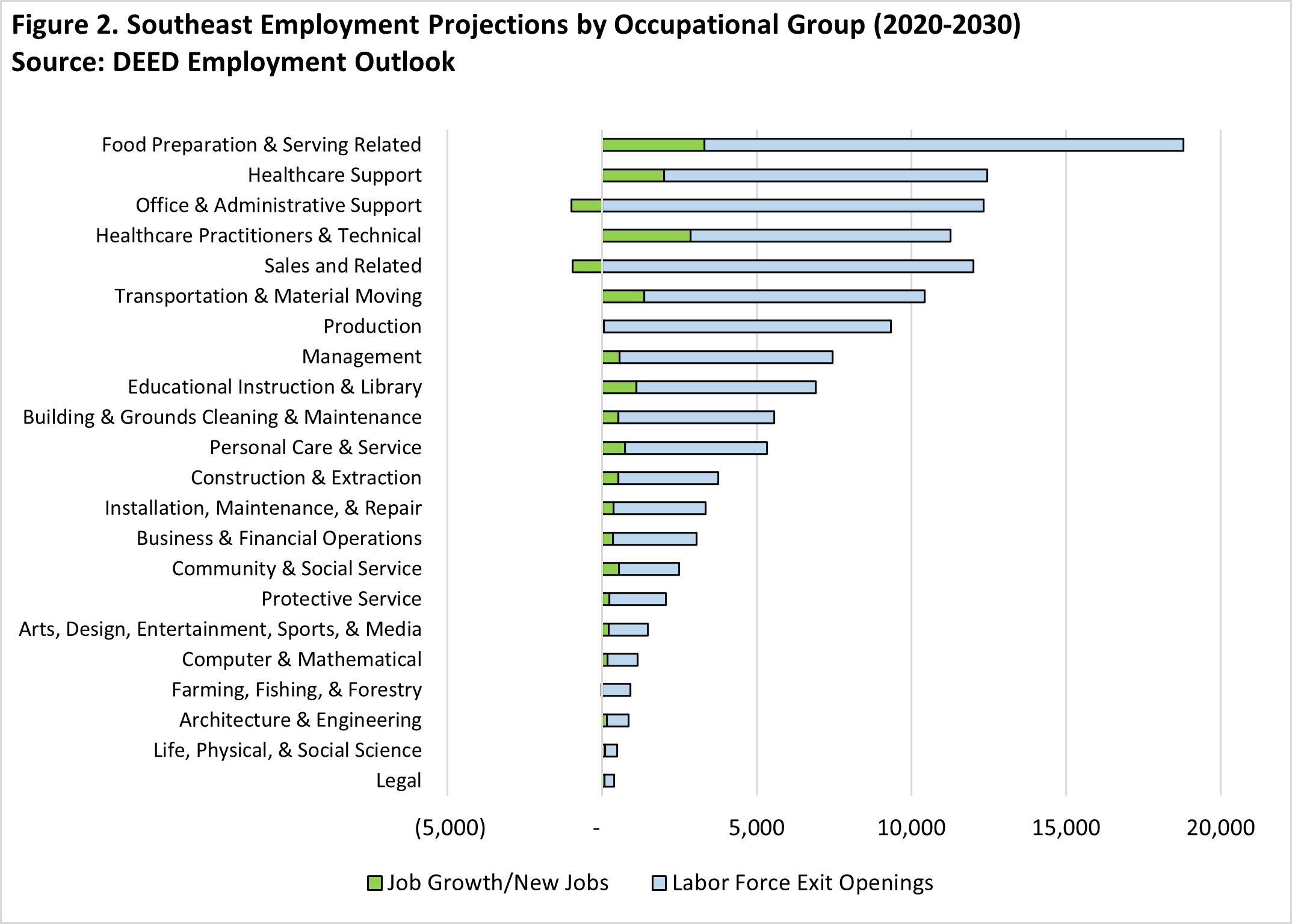 Southeast Minnesota is a health care and agricultural powerhouse. The region is home to the renowned Mayo Clinic and some of the world's most recognized food companies and brands.
Southeast Minnesota is a health care and agricultural powerhouse. The region is home to the renowned Mayo Clinic and some of the world's most recognized food companies and brands.
Advanced manufacturing is especially strong here, with machinery, chemicals, and electronics among the top products.
Want the freshest data delivered by email? Subscribe to our regional newsletters.
7/7/2022 9:00:00 AM
 Newly updated employment projections data from DEED's Employment Outlook shows that the Southeast region of the state is projected to see job growth, that is see new jobs, to the tune of 5.1% from 2020 to 2030. That equals 13,235 new jobs or 10.2% of the total openings that the region is expected to see during this 10-year time frame. The remaining openings are projected to be from labor market exits, such as retirements, which is slated to equal 116,573 openings or 89.8% of the total openings expected in the region. See Figure 1.
Newly updated employment projections data from DEED's Employment Outlook shows that the Southeast region of the state is projected to see job growth, that is see new jobs, to the tune of 5.1% from 2020 to 2030. That equals 13,235 new jobs or 10.2% of the total openings that the region is expected to see during this 10-year time frame. The remaining openings are projected to be from labor market exits, such as retirements, which is slated to equal 116,573 openings or 89.8% of the total openings expected in the region. See Figure 1.
Despite the region expecting to see over 13,000 new jobs overall, not every occupational group is slated to see job growth. There are three occupational groups that are expected to see negative growth, that is to see some existing jobs go away. This may be for a variety of reasons, such as employers using new technology to replace workers when they leave or dividing up job duties among existing workers when a current employee parts way. These three occupational groups are Office and Administrative Support (down 996 jobs or down 3.8%), Sales and Related (down 962 jobs or down 4.4%), and Farming, Fishing and Forestry (down 11 jobs or down 0.5%).
Of the remaining occupational groups that are projected to see job growth, the largest numeric growth is predicted to be for Food Preparation and Serving Related (up 3,294), Healthcare Practitioners and Technical (up 2,850), Healthcare Support (up 1,995), Transportation and Material Moving (up 1,367) and Educational Instruction and Library (up 1,099). Together these five occupational groups are anticipated to make up 80.1% of the total new jobs in the region. The largest proportional growth, however, is projected among Food Preparation and Serving Related (up 17.5%), Healthcare Support (up 12.3%) and Personal Care and Service (up 10.4%) occupations.
On the other hand, every single occupational group is expected to see job openings from 2020 to 2030 due to labor force exits. The largest number of labor force exit openings are estimated to be in Food Preparation and Serving Related (up 15,489), Office and Administrative Support (up 12,332), Sales and Related (up 12,007) and Healthcare Support (up 10,457). Combined, these four occupational groups are anticipated to make up 43.1% of the total labor force exit openings in Southeast Minnesota. See Figure 2.

While there are many job openings in Southeast Minnesota's future, one question that comes to mind is "Where are employers going to find workers to fill the openings?" Well, some sources of labor could include groups that traditionally have had lower labor force participation rates and/or high unemployment rates, such as younger workers (ages 16 to 19), Blacks or African Americans, and people with a disability.
In fact, many of the projected openings are in occupational groups that are prime for youth employment, including Food Preparation and Serving, Healthcare Support (i.e., CNA's and Personal Care Assistants), and Sales and Related. For more information on youth summer employment check out Oriane Casale's article in the March issue of the Minnesota Employment Review. Another underutilized group are the previously incarcerated, many of whom come out of prison with valuable skills learned while working while residing in correctional facilities. Some estimates show that the unemployment rate for this group is between 27% and 29%, making this a highly untapped source of employees.